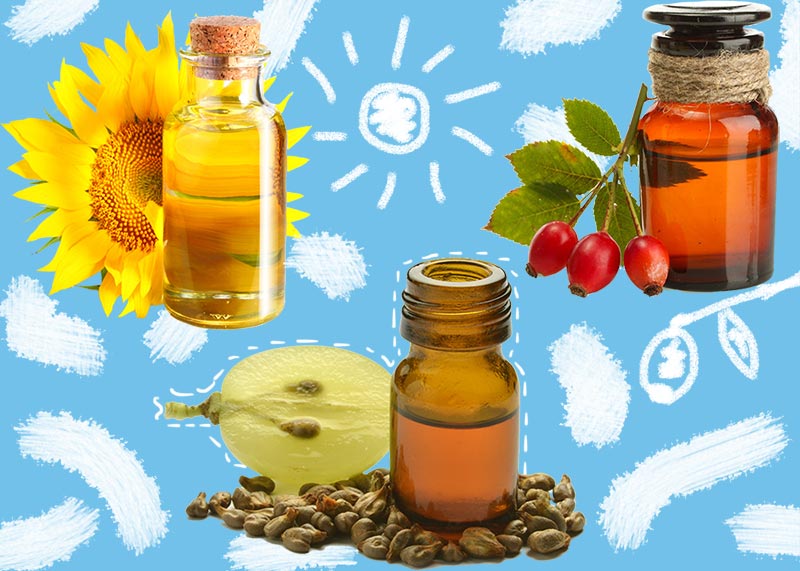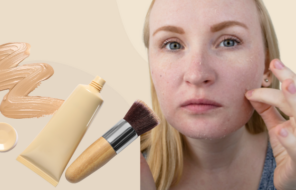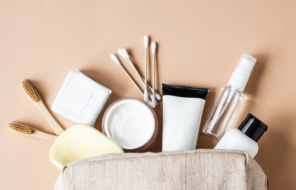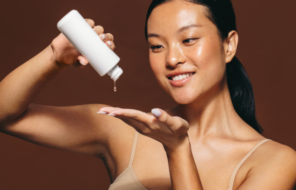If you suffer from acne or have oily skin, you’re probably used to searching high and low in the drugstore aisles for oil-free products. You would probably be surprised to learn that some oils could actually have serious benefits to your skin! The reason is that not all oils were created equal. Depending on which plant your oil comes from, and how it has been extracted, it might not have a single acne-causing component in it.
I’ll break down for you some of the key reasons why some oils are good for acne-prone skin, list a few of the best oils for acne-prone skin, and explain exactly how you should use them for the best results!
In this article:
- Why Use Oils If I have Oily Skin Already?
- Acne-Causing Fatty Acids
- Squalene, Antioxidants, and Acne
- Make Sure the Oil Is Cold Pressed or CO2 Extracted
- Top 5 Oils for Acne-Prone Skin
- How to Use Oils for Acne-Prone Skin
Why Use Oils If I have Oily Skin Already?
Oils have a lot to offer to our skin – they can work as incredible makeup removers, and in the case of botanical oils, they are rich in various healing and protective compounds that can fortify the skin and reduce acne over time. These oils are totally different from the oil the human skin produces, and can radically improve the skin’s behavior.
Acne-Causing Fatty Acids
All oils are made up primarily of fatty acids, but they also contain other things that are relevant to skin health, like vitamins and sterols. Even sebum, the oil that human skin produces, is made up of these fatty acids along with a few other things.
Each person’s skin produces sebum with a different fatty acid breakdown. Some studies have evaluated the sebum produced by people with acne-prone skin and without, and discovered that the sebum of people suffering from acne had a lower content of a specific fatty acid: linoleic acid.
On the other hand, those who weren’t prone to acne had a higher content of that fatty acid in their sebum. What follows is that oils rich in linoleic acid are unlikely to cause acne.
Squalene, Antioxidants, and Acne
There is also the possibility that those with a lot of squalene in their skin are also much likelier to experience acne. Squalene is an ingredient that naturally occurs in our skin that is also present at a higher quantity in the sebum of those who are more acne prone.
When squalene is oxidized (i.e. when it comes into contact with oxygen or the sun’s rays), it becomes very comedogenic. Oils rich in antioxidants will help prevent this process, and keep acne at bay.
Make Sure the Oil Is Cold Pressed or CO2 Extracted
Cold pressing is a unique way of extracting oil without using heat or destructive chemicals. The oil-bearing seeds or kernels are placed in a machine that exerts a lot of pressure on them, thereby expelling the oil. This process keeps the integrity of the oil, and ensures that its fatty acid composition is not changed.
The CO2 extraction process is even gentler. Seeds are placed in an airtight apparatus. Without the presence of any oxygen, the seeds are blasted with carbon dioxide, which removes the oil from the seeds.
This process totally preserves the essential fatty acid profile of the oil, in addition to keeping the most delicate antioxidants that would normally be destroyed in the presence of even a bit of heat or oxygen.
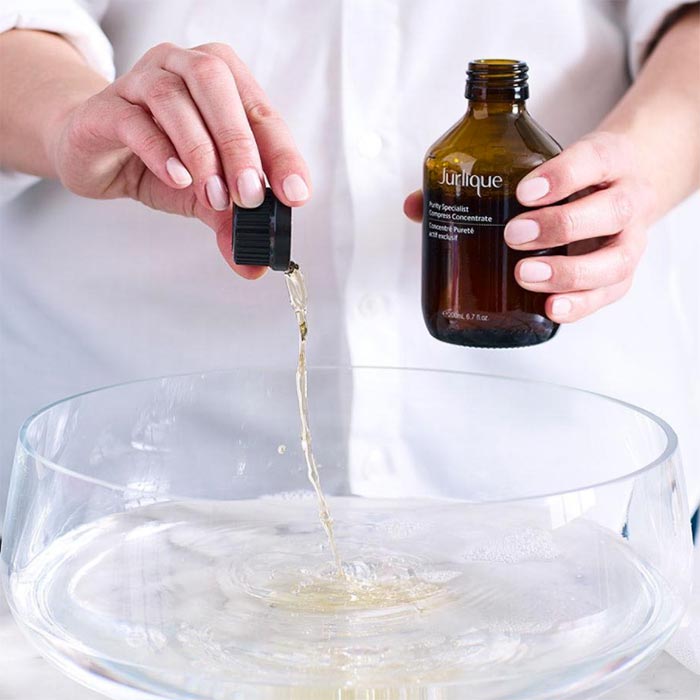
Top 5 Oils for Acne-Prone Skin
1. Sunflower Oil
When it comes to sunflower oil for acne-prone skin, it is so important that the oil be cold pressed. This oil is super moisturizing, and made up of 60% linoleic acid. It is also quite rich in the antioxidant vitamin E.
A little bit goes a long way with this oil, but you need never fear that it will cause any breakouts. Unlike sunflower oil used for cooking, cold-pressed sunflower oil has a fairly short shelf life, so you might want to keep it in the beauty fridge. It is perfect for those with dehydrated and mature yet oily or acne-prone skin.
2. Grapeseed Oil
This is another oil for acne-prone skin that you want to use cold-pressed. Since it is ultra-light, you don’t need to worry about looking greasy after using it.
In addition to having a high linoleic acid content, and lots of skin healing, anti-inflammatory, and anti-aging compounds, it also has an astringent effect. If you are dealing with enlarged pores, it’ll help tighten the skin and minimize their look.
It might have some antimicrobial properties as well, but it’s no replacement for your antibacterial acne treatment. Since this magnificent oil has a short shelf life, keep it in the fridge or fortify it with some Vitamin E!
3. Rosehip Oil
This oil for acne-prone skin has a reputation as a skin-smoothing miracle potion. Like grape seed oil, rosehip oil has a large quantity of linoleic acid and a low quantity of oleic acid, making it perfect for acne-prone skin.
What brings it up another level is a not negligible quantity of naturally occurring tretinoin, a form of vitamin A that has some serious power. Thanks to tretinoin, rosehip oil is able to dramatically speed up the cell turnover rate, which helps repair skin that has been damaged by acne.
4. Borage Seed Oil
This oil is unique, because in addition to lots of linoleic acid, it also contains gamma linolenic acid. GLA is a fatty acid with powerful anti-inflammatory properties that are very useful for anyone battling cystic, inflamed acne.
One of the best oils for acne-prone skin, it is also a wonderful barrier repairing fatty acid that heals and repairs the skin. Lots of vitamin E and ferulic acid provide serious antioxidant protection, making it wonderful for those dealing with both premature aging and acne.
5. Mineral Oil
This oil gets a bit of bad rep, but it is unjustified for the most part. Mineral oil is a byproduct of the petroleum industry, and while there have been some risks that it might be contaminated with some harmful impurities, pharmaceutical and cosmetic grade mineral oils are pure, clean, and perfectly safe.
This oil’s composition is totally different from that of a plant oil, and there is no risk of breakouts from it. While it doesn’t have the same antioxidant, healing, and anti-inflammatory properties that the other oils for acne-prone skin on this list have, it is by far the most occlusive oil, meaning it creates a perfect seal over the skin that prevents moisture loss.
Those with dehydrated acne-prone skin can seriously benefit from it. It is also very popular for the oil cleansing method, because it is cheap, and surprisingly effective at softening the sebum inside clogged pores, thereby clarifying the skin.
While these are the best oils for acne-prone skin, they are not the only ones! There are many other oils high in linoleic acid and similar fatty acids good for oily or acne-prone skin, including sea buckthorn oil, hemp seed oil, safflower oil, and evening primrose oil.
Now that you know what to look out for, you’ll have an easier time choosing for yourself the perfect oil for acne-prone skin.
How to Use Oils for Acne-Prone Skin
There are a few amazing ways to incorporate oils into your skin care routine, so read about them and choose your favorite! Since each oil has slightly different properties, you can use one oil one way, and another in a different way. You can also make your own custom blend of a few oils.
Oil Cleansing
This first option is especially good if you’re nervous about leaving oils on your skin, and it is called oil cleansing. It is best to choose one of the less expensive oils on this list, since you will need to use a high amount. Mineral oil is very popular for OCM, but sunflower oil should also do the trick.
The other thing you’ll need is a gentle muslin or microfiber cloth. Using circular motions, massage a quarter size amount into your skin, breaking down any makeup you might be wearing as well as any dirt or impurities. Do not massage for longer than 30 seconds.
Using the dry cloth, wipe off as much of the oil as you can. If you’ve used mineral oil, it is best to follow it up with a facial cleanser, since mineral oil is highly occlusive and won’t make it easy for any following skin care products to penetrate your skin.
If you’ve used a lighter oil, you don’t have to wash a second time, and you can simply follow it with the rest of your usual skin care routine.

Final Skin Care Step
This is my favorite way of using skin care oils. Cleanse, tone, treat, and moisturizer your skin as you normally would (you can even do an oil cleanse!), and then lock in all of that goodness with a pea-sized amount of oil. This will occlude your skin to prevent dehydration, while delivering a serious amount all of the incredible nutrients present in the oil. This is best with plant oils, although mineral oil is best if you’re dealing with serious dehydration.
Blended into Lotion
If you don’t like the hassle of extra skin care steps, you can simply add a drop of your favorite nutritious oil into your moisturizer. Do this in your palm before applying your moisturizer, since adding the oil directly to the container can compromise your face cream’s shelf life.
How do you use oils for acne-prone skin? Do you already have some favorites, or is there an oil you would like to try? Share your experience with us!
Photos via Instagram

